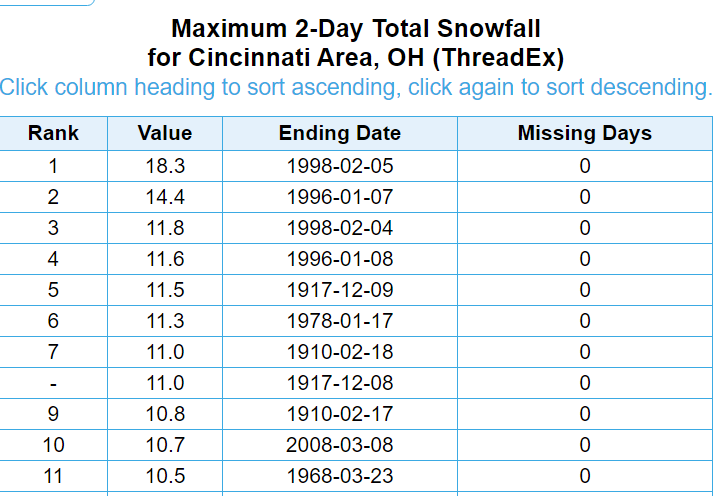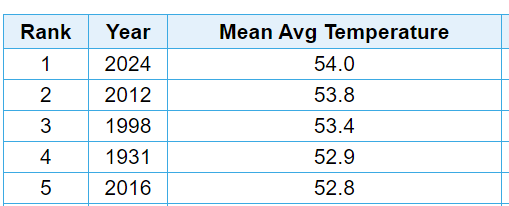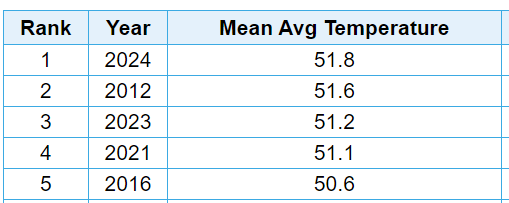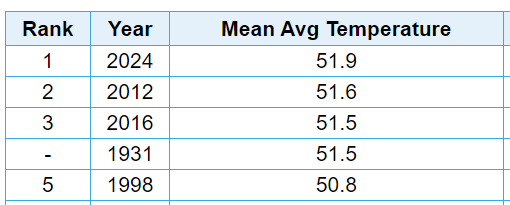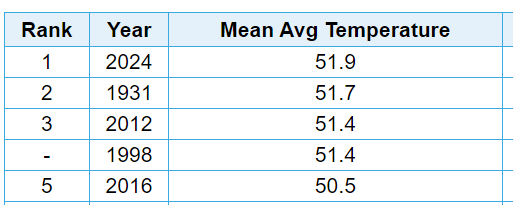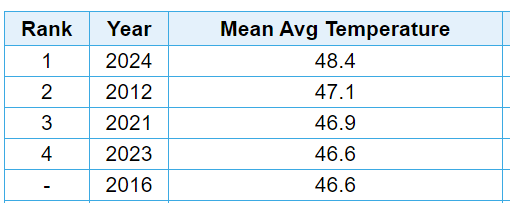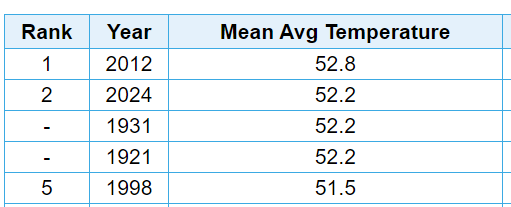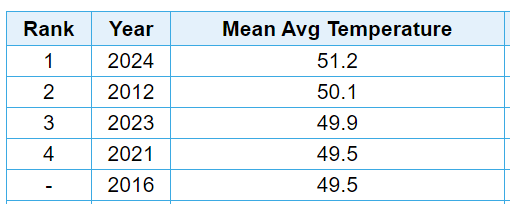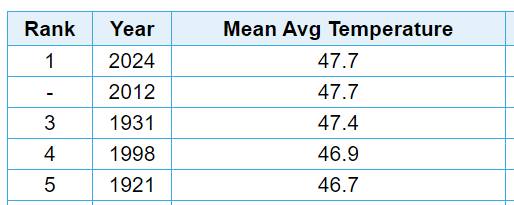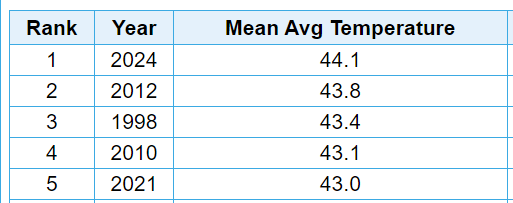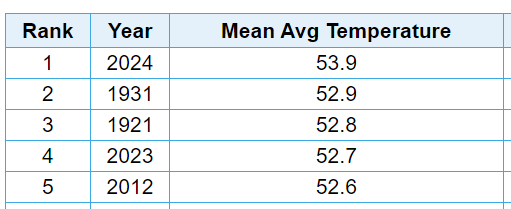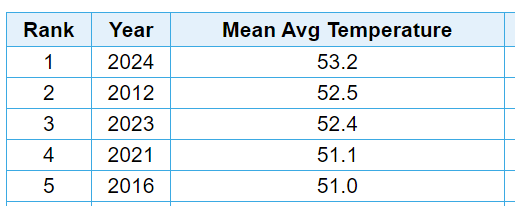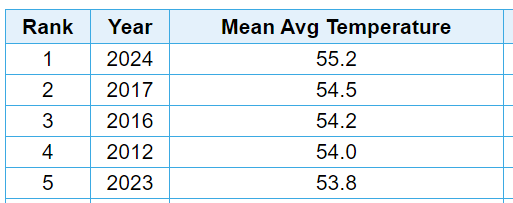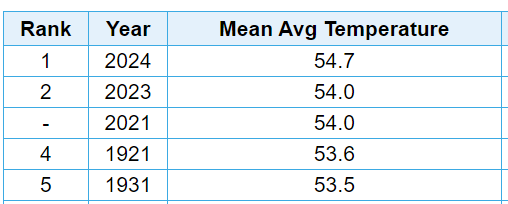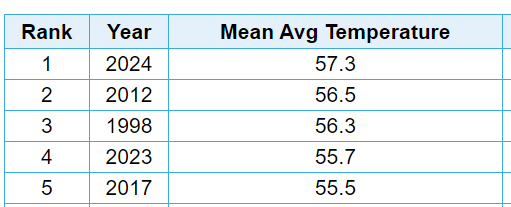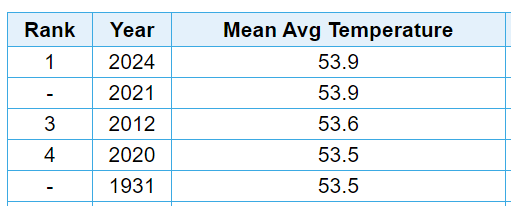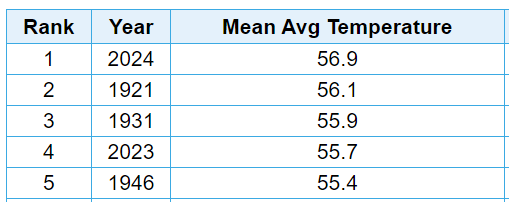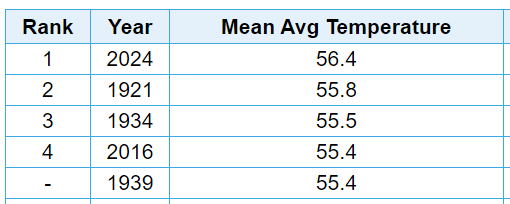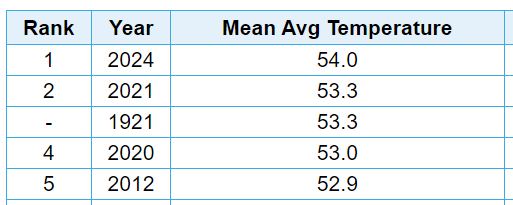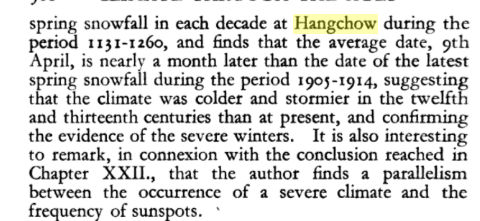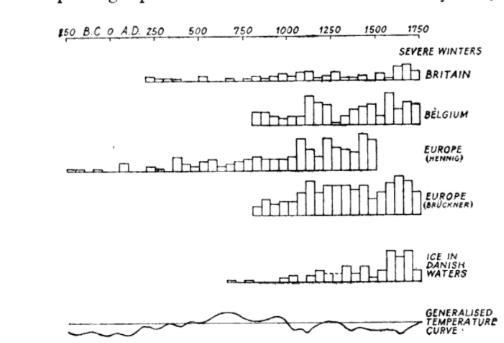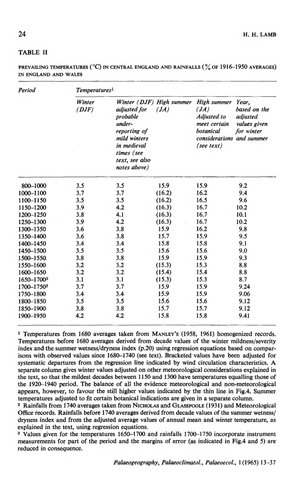
TheClimateChanger
Members-
Posts
4,222 -
Joined
-
Last visited
Content Type
Profiles
Blogs
Forums
American Weather
Media Demo
Store
Gallery
Everything posted by TheClimateChanger
-
One for the record books in the Queen City. Removing duplicates, this appears to be 7th largest 2-day storm ever recorded. It was the largest 2-day storm since 2008, and that one eclipsed this by only 0.1 inches. Only 2 storms have recorded greater than 1" more of snow in any 2-day period. From 1917 to 1978, no storms of this intensity were observed. This is about as big as it gets in the home of Skyline Chili. (1) 18.3 inches, 2/4/1998-2/5/1998 (2) 14.4 inches, 1/6/1996 - 1/7/1996 (3) 11.5 inches, 12/8/1917 - 12/9/1917 (4) 11.3 inches, 1/16/1978 - 1/17/1978 (5) 11.0 inches, 2/17/1910 - 2/18/1910 (6) 10.7 inches, 3/7/2008 - 3/8/2008 (7) 10.6 inches, 1/5/2025 - 1/6/2025
-
Pittsburgh/Western PA Winter 2024-2025 Thread
TheClimateChanger replied to Rd9108's topic in Upstate New York/Pennsylvania
21Z SREF mean for PIT was 7.5”, with a range of 0” to just under 17.5”. Interestingly, while the mean was 7.5”, all of the solutions showing more than the mean, were above 10”. -
Pittsburgh/Western PA Winter 2024-2025 Thread
TheClimateChanger replied to Rd9108's topic in Upstate New York/Pennsylvania
I think that was just the highest official gust. Certainly was quite windy though regionwide that evening, with a lot of power outages. -
Pittsburgh/Western PA Winter 2024-2025 Thread
TheClimateChanger replied to Rd9108's topic in Upstate New York/Pennsylvania
-
Central PA Winter 2024/2025
TheClimateChanger replied to Voyager's topic in Upstate New York/Pennsylvania
Ah, yes, you are correct. So yeah, expect comfortable indoor conditions. -
Central PA Winter 2024/2025
TheClimateChanger replied to Voyager's topic in Upstate New York/Pennsylvania
Looks like the GFS is suggesting some drying east of the ridges. -
Central PA Winter 2024/2025
TheClimateChanger replied to Voyager's topic in Upstate New York/Pennsylvania
Certainly looking promising for a widespread 6"+ snowfall for much of the southern half of the State. On the college football weather front, as both Hard Rock Stadium and the Cotton Bowl are open-air (although Hard Rock is partially enclosed for fans), looks like there should be no major weather concerns. Forecast for Miami on Wednesday shows abnormally cool weather with low temperatures perhaps dropping below 50F and highs in the upper 60s, with fair weather. I expect Thursday to be similar but perhaps with some rebound in temperatures as a storm gathers over the Gulf of Mexico. In northern Texas, a sharp cool front will move through with chilly weather through Wednesday. Early indications for game day are similar conditions with some moderation - 40s to near 50, game time temp could dip into the 30s. Weather looks mostly fair, albeit chilly, at this point. At this time, it doesn't look like weather should play a significant role in either matchup. -
Central PA Winter 2024/2025
TheClimateChanger replied to Voyager's topic in Upstate New York/Pennsylvania
My speculation of a PSU/OSU natty looking considerably stronger after another round of play. Anyways, on the weather front, looks like a round of snow on the way for much of Pennsylvania, particularly in the south. The 00z GFS is illustrative, showing possible snowfall over the next 144 hours. -
Similar story in Michigan. Grand Rapids fell a little short of 2012, but record-breaking warmth was widespread throughout the state. I think the most impressive thing about 2024 is near the uniformity of record-breaking warmth. Some of the prior records dated to recent years (2021, 2023, 2017), a number from 2012 but a few were as old as 1921 & 1931. Detroit Lansing Flint Saginaw Alpena Grand Rapids Traverse City Houghton Lake Marquette (Airport) Kalamazoo Muskegon
-
Record warmth regionwide. No doubt that 2024 will go down in the books as the warmest year on record in the Buckeye State. Cleveland Akron Toledo Columbus Dayton Zanesville Mansfield
-
Occasional Thoughts on Climate Change
TheClimateChanger replied to donsutherland1's topic in Climate Change
I just mentioned them since they thought the climate was, more or less, stable during the period of recorded history. I'm sure they would agree that a significant change has occurred since that time if they had the benefit of hindsight. I was doing a bit more reading today - Climate Through the Ages, by C. E. P. Brooks (1926). Had to chuckle at this bit: According to the author, Hangzhou reportedly had a median date of April 9th for its last spring snowfall for the period 1131-1260, or nearly a month later than the decade ending 1914. Hangzhou is at 30N, with a climate similar to Columbia, South Carolina, and had snow in most Aprils during the heart of the so-called Medieval Warm Period. And there are people here that think it's reasonable to believe there may have been little if any snow in the Mid Atlantic in that era. According to Wikipedia, for the 1991-2020 period, Hangzhou averaged 2.8 days with snow in February, 0.8 days in March, and 0.1 days in April. This would suggest the median last snowfall probably occurs in early March [and perhaps even very late February]. For further context, the record low in April (since 1951) is 0.2C/32.4F. If this is true - and there's no reason for the author to have made it up - this would be suggestive not of a warmer climate at Hangzhou, but one much colder than today, during that era. This book was incredible. The prevailing thought has changed so much since 1926. They believed - as you can see from the last sentence of the passage above - that high sunspot activity led to cooler global temperatures! The book suggests that the slight increase in radiation was offset by the destruction of ozone, which was believed to be a more potent greenhouse gas than CO2 since it absorbs radiation of different wavelengths than water vapor. The book discusses carbon dioxide, but minimizes the impact because of this "saturation" effect, but does acknowledge that it may play a warming role in the high atmosphere where water vapor is less extensive. This misconception is still trotted out today by some so-called skeptics. Here's a little context from the University of Texas from 2010: Century-old climate myth still making the rounds - UT News Literally, everything was backwards less than 100 years ago. No "Roman Warm Period" - they believed it was colder and wetter, with the mean storm track further south, promoting better conditions for agriculture in the southern Europe. Considering that the European "generalised temperature curve" below appears to zero at 1750 temperatures, imagine where it would be if carried forward to today. -
Central PA Winter 2024/2025
TheClimateChanger replied to Voyager's topic in Upstate New York/Pennsylvania
Looks like a little subtle rotation showing up on radar, so a spin-up tornado certainly can't be ruled out. -
Central PA Winter 2024/2025
TheClimateChanger replied to Voyager's topic in Upstate New York/Pennsylvania
Getting ready to post my now seemingly annual synopsis of record-breaking temperatures. From what I can tell, 2024 was a record-breaker pretty much everywhere. -
Seems underdone. Map shows western Pennsylvania near normal, but the actual departure at Pittsburgh is +2.7F, likely to finish at least +3F with today factored into the mix. Which also secures an incredible, presumably record-breaking 18th consecutive month of warmer than normal temperatures in this record-shatteringly hot year which undoubtely far exceeds anything ever observed in even the lifetime of the oldest great-great grandparent of the oldest person alive today.
-
Pittsburgh/Western PA Winter 2024-2025 Thread
TheClimateChanger replied to Rd9108's topic in Upstate New York/Pennsylvania
Climatologically, not really an outcome that can be discounted. Not unusual to see big storms sliding to our south, although that hasn't been the case in recent years [largely because it's been too warm in that area for heavy snowfall outside of the mountains]. And, of course, snowfall north of I-80 is complements of Lake Erie, with upslope enhancement in the higher terrain. -
Occasional Thoughts on Climate Change
TheClimateChanger replied to donsutherland1's topic in Climate Change
My point in looking at this history is just to point out that there was never any sort of consensus that the MWP was a massive global warming event. Some here - and comments on various social media sites - make it out to be like the PETM. In fact, the mid 20th century view was a departure from the prevailing scientific view of a, more or less, continuity of climate over the preceding 2500 years [a fact which Lamb points out in his 1965 paper]. But even looking at some of these old reconstructions [which tended to be for specific geographic locations], when we update for recent temperature data, they actually largely agree with the assessment that current temperatures are without precedence over the past 1200-1400 years [at least]. If we transported any of these 18th and early 19th century scientists to the present, they would undoubtedly be amazed by the climatic changes that have occurred in that interval. And, in any event, there does not appear to be anything that would suggest there was a 150-200 year period of no snow in the American Mid-Atlantic region 1,000 years ago. And, of course, we have actual modern reconstructions which integrate more data from throughout the globe, which do not suggest temperatures, on a global scale, anywhere near the present values. So any of these contrarian views are implicitly denying the scientific consensus, which itself is building off of this earlier scholarship. Actually, with the benefit of hindsight, it was probably human-caused warming that led to the characterization of the MWP/LIA, since the warming of the late 19th century and (particularly) the first several decades of the 20th century were so substantial that they led to additional research in past climate changes of the common era. Which also gets to the root of a second myth, which is that the various temperature records start at some record cold point. In fact, it appears the climate had moderated some, and by the early 20th century, was rather mild on a millenial scale, with the coldest temperatures of the second millennium likely occurred between about 1550 and 1750 CE. -
Occasional Thoughts on Climate Change
TheClimateChanger replied to donsutherland1's topic in Climate Change
I just find it interesting that this myth is so pervasive. I would even go so far as to say, to some extent, it's a hoax perpetuated by the same people who accuse climate scientists of hoaxing AGW. The post linked below is from user who appears to accept the reality of AGW but appears to believe we know something about the climate of Europe and Asia during the medieval period that suggests the mid-Atlantic region of the United States may have gone 150-200 years with little or no snow. In fact, there appears to be zero evidence to support this contention, yet the post was widely "awarded" suggesting others may also find it to be a reasonable assessment of that time period. Of course, the awards may have been given more for the comeback to certain users were minimizing the recent spate of mild winters. It's worth examining H. H. Lamb's reconstruction of central England temperatures back to 800 CE, which was the source of the original IPCC graphic which is often falsely trotted around as evidence of a global change during the MWP [like I said, to some extent, there is an outright hoaxing from certain segments of the population and science community]. Looking closely at this, we see winter temperatures in the early 20th century were already supposed to have been as warm as those during the peak of the medieval period. And we can see the "raw" reconstruction actually supported somewhat cooler winters. These were determined by contemporary reports of snow and ice cover, as well as notes on mild winters. The values approach those of early 20th century, only with adjustments made by Lamb, who supposed that mild winters may have been somewhat underreported since the climate was warmer. So it's a somewhat circular logic, and there's really no hard evidence of that in the data, since the reconstruction suggests winter temperatures were comparable to those of the late 19th century and even cooler than the early 20th century. The summer temperatures were approximated based on a correlation of dryness/drought with July and August temperatures. We can see here, there is some evidence of warmer July and August mean temperatures in the early part of the second millenium. However, it's interesting the raw data are not presented at all. Instead, adjustments were made to account for supposed changes in the atmospheric and wind patterns during the MWP and LIA. And we can see adjusted values presented in two places - one during the supposed MWP, and one during the heart of the LIA. One can probably surmise from the values presented [and the commentary of the author], that the medieval values were adjusted upwards and the LIA values adjusted downwards. This also suggests that the raw data likely would have shown little change over the entire 1150 years. The values from 1100 to 1400 CE were then adjusted upwards even more to "meet certain botanical considerations." It appears that the author believed temperatures were about 1C too low in the summertime in the early 20th century for effective cultivation of grapes, even though the cultivation of grapes was likely greater during that time period than at any point in the medieval times (more on this later). One other questionable assumption. Even accepting all of the author's adjustments, we see at the peak of the supposed MWP in central England, which he places at 1150-1200 and 1250-1300, DJF temperatures are said to be the same as early 20th century temperatures, while July and August temperatures peak about 0.9C above those of the early 20th century. The five months analyzed then are about 0.5C warmer than the early 20th century, yet the annual value presented peaks in both of those periods at 0.8C warmer than the early 20th century. Why are the annual departures reported 60% higher than the average of the 5 months analyzed? Of course, most of this isn't super important, because the current 30-year running average appears to be higher than the peak 50-year estimate, and several recent years have been at or above 11C - or about 1C higher than the peak of the MWP, as suggested by Lamb's reconstruction. Lamb's 1965 paper also discusses a 1962 reconstruction of Icelandic temperatures based on records of sea ice, which suggested temperatures perhaps 0.4C warmer than the 1901-1930 average between 1100-1150 CE, but that the peak was still about 0.5C less than the decadal average from 1931-1940 [which apparently was the end of the analysis period]. Lamb seems to suggests the relationship between temperature and sea ice might be weaker during low sea ice periods suggesting the peak may have been underestimated by the author of that paper. Regardless, accepting that figure inevitably leads to the conclusion that recent Icelandic temperatures are far higher than any comparable period dating back to at least 954 CE. And Lamb's analysis of Central England - far from casting doubt on AGW - would suggest the most recent 30-year period likely exceeds any 50-year average dating back to 800 CE, and that recent years are exceptionally warm. These are based on reconstructions predating any sort of consensus on AGW [or certainly any awareness of its likely impacts], and, in the case of Lamb's, was predicated on some questionable assumptions. More context on the topic of English grape growing... RealClimate: Medieval warmth and English wine RealClimate: English vineyards again…. If you review climate literature from the early and mid 19th century, you'll see this is a pretty accurate synopsis of the history of grape growing in the British isles. It's worth pointing out that many of the grapes cultivated in that era were used not for wine, but for verjuice. And likely were hardier varieties of grape that wouldn't produce wine that would be marketable in the modern era. And so comparisons with climate of chief grape growing regions [for wine consumption] likely aren't particularly valid. See, e.g., Sir John Leslie's section on climate in Narrative of Discovery and Adventure in the Polar Seas and Regions (1844), and Lorin Blodgett's Climatology of the United States and of the Temperate Regions of the North American Continent (1857). I think Leslie's History of the Climate of the British Isles (1829) expands on this, but I couldn't locate it online. -
Pittsburgh/Western PA Winter 2024-2025 Thread
TheClimateChanger replied to Rd9108's topic in Upstate New York/Pennsylvania
A couple of record highs have also been set. Wheeling reached records each of the last two days, and Morgantown reached a record high of 72F earlier today. -
Pittsburgh/Western PA Winter 2024-2025 Thread
TheClimateChanger replied to Rd9108's topic in Upstate New York/Pennsylvania
Marginal risk of severe weather - including a 2% risk of tornados - expanded into western Pennsylvania. These type of setups have produced well over the last year, so despite the minimal risk, would keep an eye out to see if anything materializes. -
Occasional Thoughts on Climate Change
TheClimateChanger replied to donsutherland1's topic in Climate Change
Interesting. I know BEST has data back to 1750 (land only). This looks a little smoother. But it actually calls to mind a second gripe. A common refrain is that the instrumental record starts at the end of the little ice age, but most of the major instrumental records don’t begin until the late 19th century. While that period seems cold to us, it seems the people who lived in that era widely believed it to be warmer than colonial times. And there definitely seems to be some degree of support for that view in the various reconstructions and with the (rather limited) instrumental records available in that era. For that matter, even the early 20th century looks cold to us, but it was in fact, unbelievably hot compared to any other time in last millenia. Even H. H. Lamb’s original central England reconstruction has the early 20th century, approaching the peak levels of the so-called MWP. And if you look at the graphic, you see around 1000 CE, he has mean temperatures in central England little warmer than the so-called LIA. Given these are 50-year averages, we can probably reliably extrapolate that back and safely assume that it wouldn’t be possible to have a mean near that of the MWP until at least the middle of the first millennium (given these speed of natural climatic changes). The point I’m making here is if you read contemporary science of the time, the late 19th and early 20th century was largely thought to have been a milder period, which is the opposite of what a lot of people say. Yet it seems the most reliable reconstructions agree with the assessment of the era.

